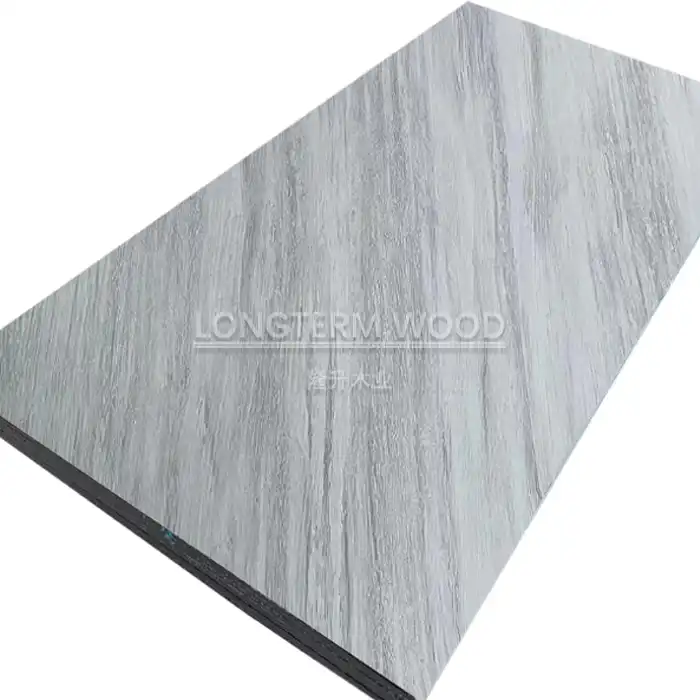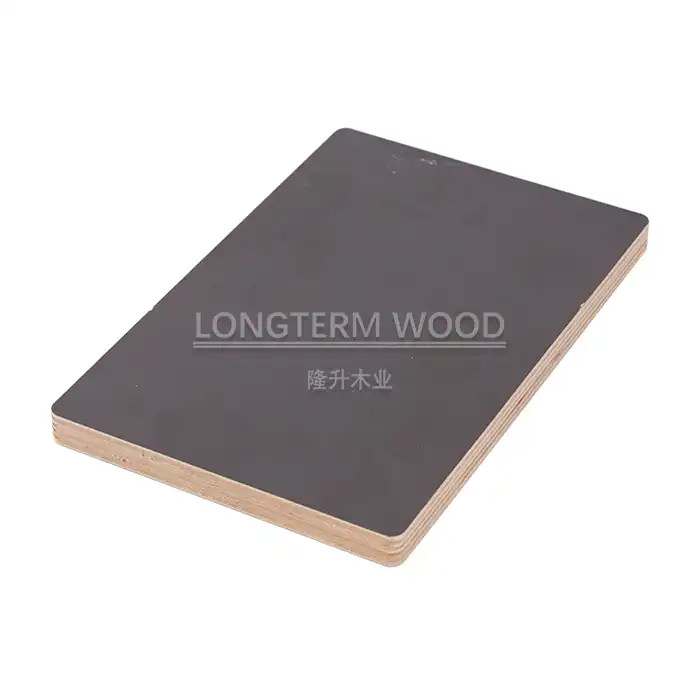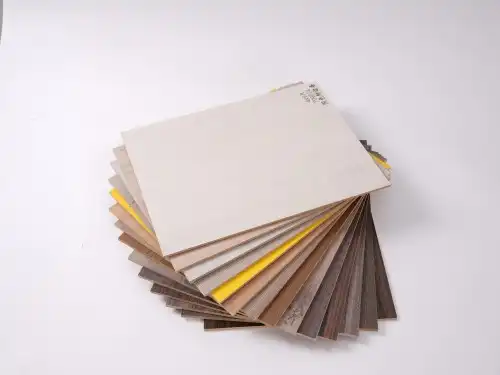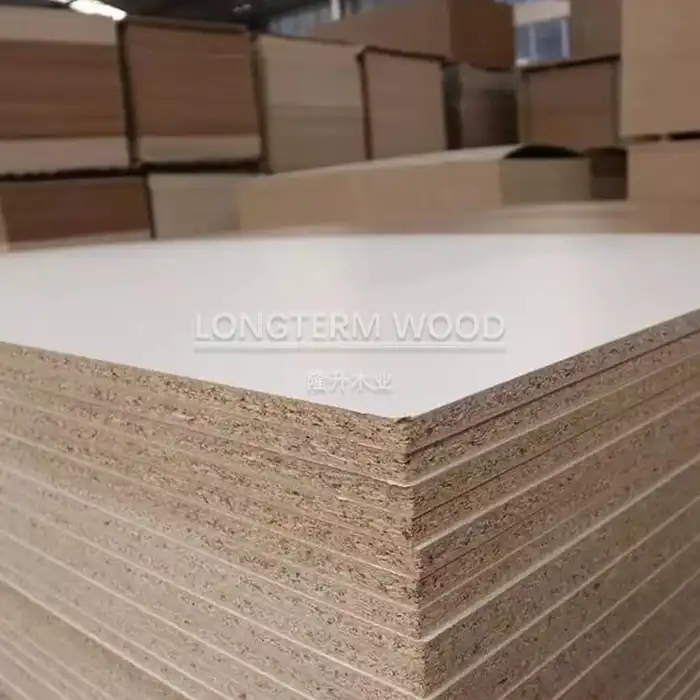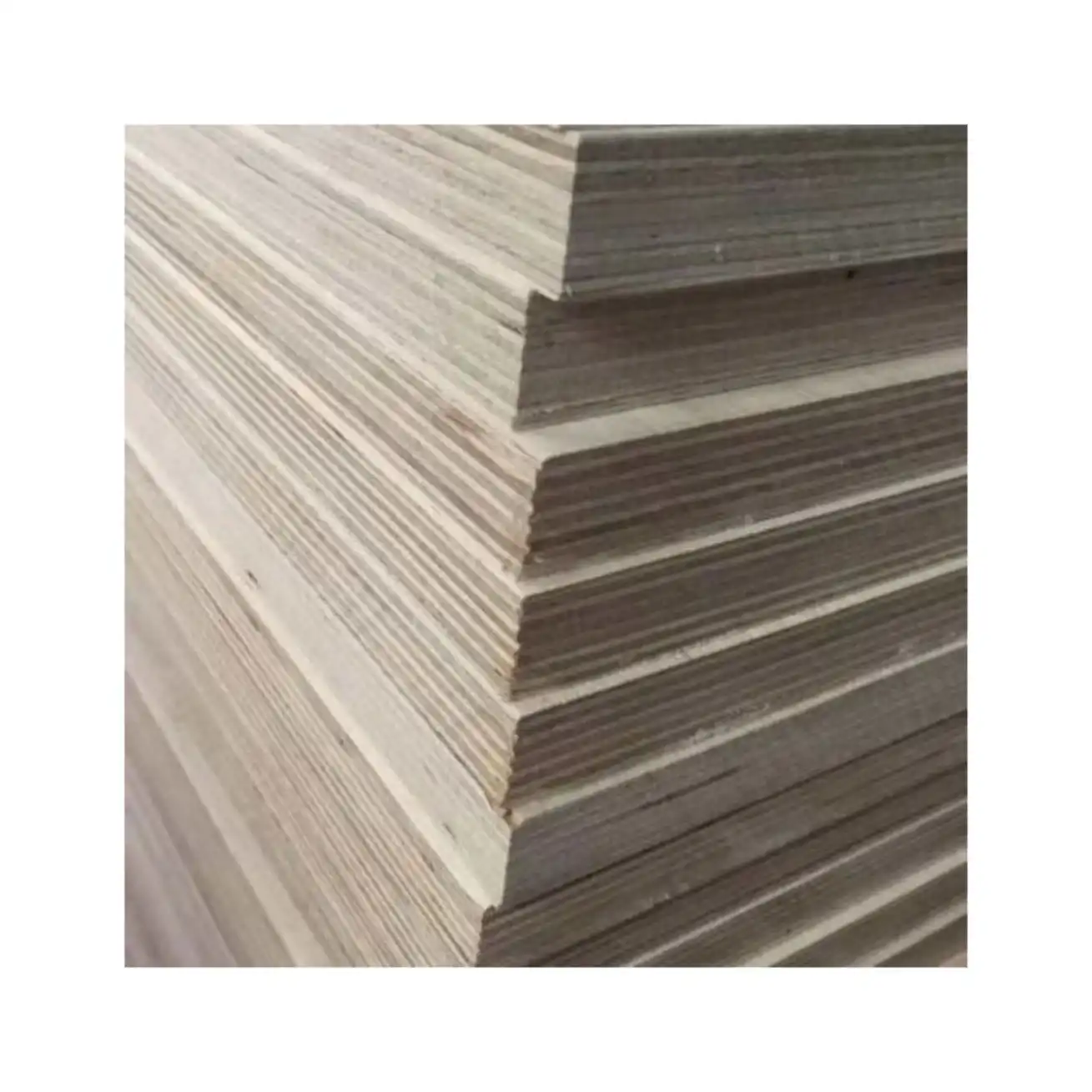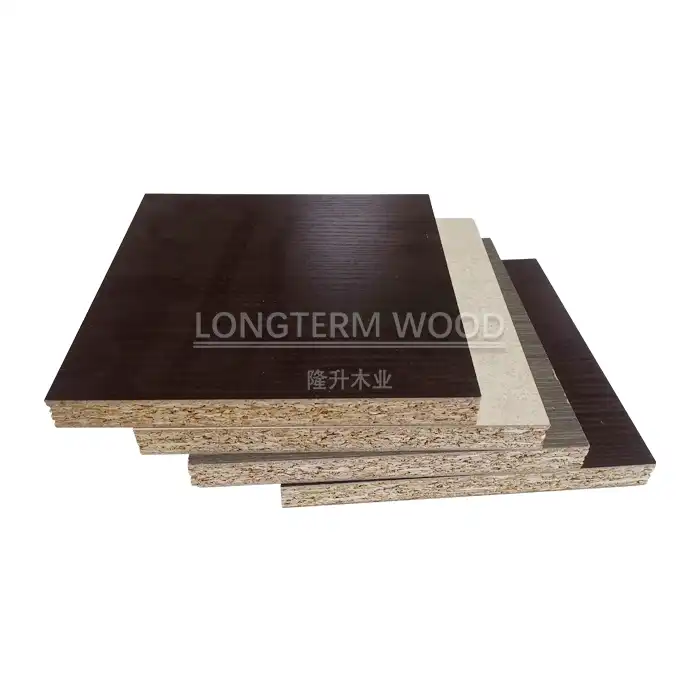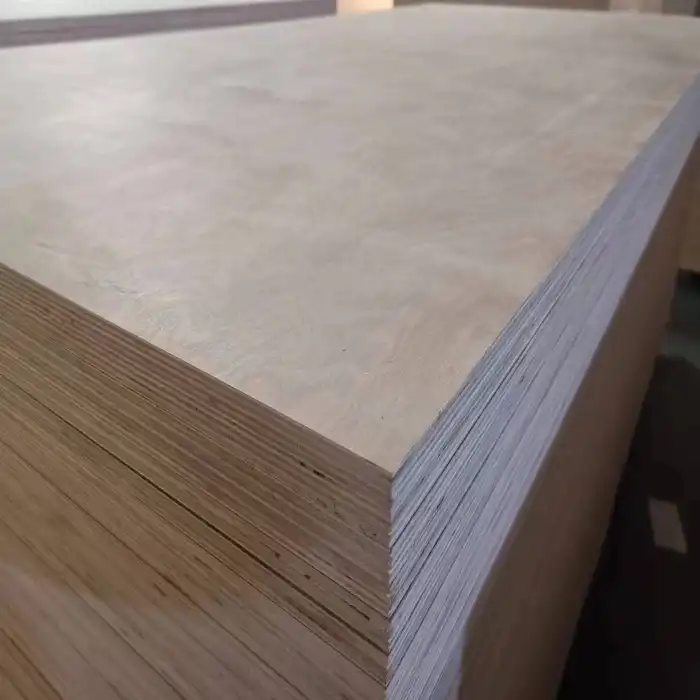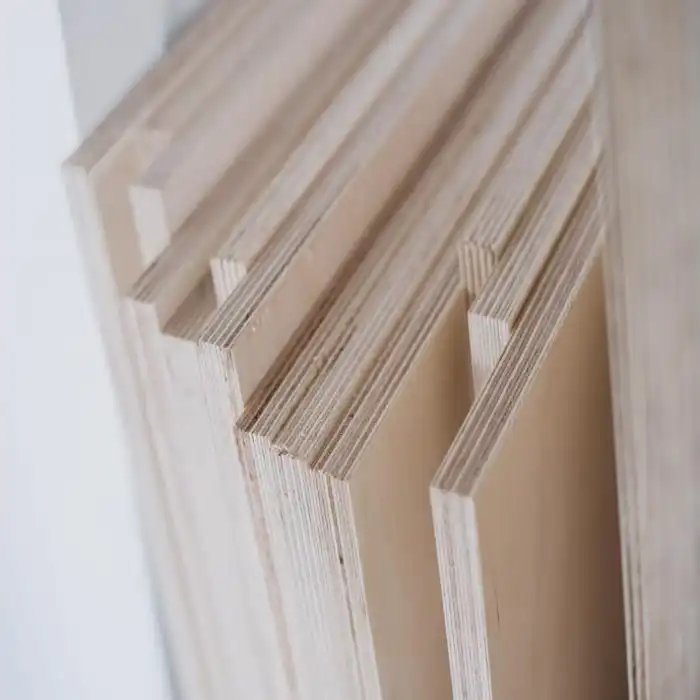
How Does UV-Resistant Melamine Plywood Prevent Fading?
2025-04-30
In the world of interior design and furniture manufacturing, UV damage and color fading present significant challenges to maintaining aesthetic appeal and product longevity. UV-resistant melamine plywood offers a sophisticated solution to this persistent issue. This innovative building material combines the structural strength of plywood with specialized UV-inhibiting compounds integrated into the melamine resin layer. Through advanced manufacturing technologies, Melamine Plywood with UV protection creates a durable barrier that shields the underlying wood and decorative surfaces from the harmful effects of ultraviolet radiation, ensuring colors remain vibrant and true for years even when exposed to sunlight.
The Science Behind UV Protection in Melamine Plywood
UV Damage and Its Impact on Traditional Materials
The damaging effects of ultraviolet radiation on wood and wood-based products cannot be overstated. When standard plywood or particleboard is exposed to UV light, photochemical reactions begin to break down lignin, one of wood's primary structural components. This degradation process leads to noticeable color changes – typically yellowing or graying – and can eventually compromise the material's structural integrity. For decorative surfaces, the consequences are even more immediately apparent: vibrant colors fade, patterns lose definition, and the overall aesthetic appeal diminishes significantly. Traditional Melamine Plywood without UV protection typically shows visible signs of deterioration within just 6-12 months of regular sunlight exposure, particularly in areas with large windows or in commercial spaces with extensive lighting. This degradation not only affects appearance but can lead to premature replacement, increasing costs and environmental impact. Understanding these mechanisms of photodegradation has driven manufacturers like Linyi Longterm Wood Industry to develop enhanced protection systems that specifically target the wavelengths responsible for color fading and material breakdown.
Composition of UV-Resistant Melamine Resin
The remarkable UV-resistance of premium Melamine Plywood stems from its specialized chemical composition. The protective melamine resin layer contains carefully formulated UV absorbers and stabilizers that function through multiple protective mechanisms. These specialized additives, including benzophenones, benzotriazoles, and hindered amine light stabilizers (HALS), effectively absorb harmful ultraviolet radiation before it can penetrate to the decorative layer or substrate. Modern Melamine Plywood manufacturers incorporate these compounds during the production process, ensuring they become an integral part of the resin structure rather than merely a surface treatment. This integration allows the protective compounds to maintain their effectiveness even as the surface experiences wear over time. Additionally, the latest formulations include antioxidants that prevent degradation of the polymer chains within the resin itself, further enhancing longevity. Linyi Longterm Wood Industry's melamine plywood utilizes a proprietary blend of these protective compounds, calibrated to provide optimal protection across the full spectrum of UV radiation while maintaining the material's clarity and visual appeal. This advanced composition ensures that their Melamine Plywood maintains its original appearance and structural integrity throughout years of use, even in environments with significant light exposure.
Manufacturing Process for Enhanced UV Protection
The manufacturing process behind UV-resistant Melamine Plywood represents a remarkable fusion of traditional woodworking techniques and cutting-edge chemical engineering. The production begins with selecting high-quality wood veneers that form the core layers of the plywood. These veneers undergo rigorous quality control to ensure uniform thickness and structural integrity before being arranged in cross-grain orientation for maximum strength. The differentiating factor comes during the resin application phase, where specially formulated UV-resistant melamine resins are applied through precision spreading equipment that ensures optimal coverage without excess. The treated plywood sheets then enter a carefully controlled hot-pressing process, where specific temperature and pressure parameters activate the chemical bonding between the resin and wood fibers while simultaneously catalyzing the integration of UV-protective compounds throughout the material. Linyi Longterm Wood Industry employs advanced multi-stage pressing technology that optimizes this crucial phase, resulting in Melamine Plywood with superior UV resistance without compromising other performance characteristics. Following pressing, each board undergoes precision sanding and edge finishing before a final quality inspection confirms the proper integration of protective elements. This meticulous manufacturing process creates a finished product where UV protection isn't merely a surface treatment but an intrinsic characteristic of the material itself, ensuring lasting performance in challenging light environments.
Performance Benefits of UV-Resistant Melamine Plywood
Color Stability and Aesthetic Longevity
The exceptional color stability of UV-resistant Melamine Plywood represents a significant advancement in maintaining aesthetic appeal over extended periods. When standard decorative surfaces are exposed to ultraviolet light, visible color degradation typically begins within months, with colors appearing washed out or taking on undesirable yellow undertones. In contrast, premium UV-resistant Melamine Plywood maintains its original color fidelity with minimal deviation even after years of exposure to natural or artificial light sources. Independent laboratory testing reveals that quality UV-protected Melamine Plywood retains over 95% of its original color intensity after the equivalent of five years of indoor light exposure, compared to just 60-70% retention in standard products. This remarkable stability extends to both solid colors and complex patterns, preserving design integrity throughout the product lifecycle. For interior designers and architects, this translates to greater confidence that specified finishes will maintain their intended aesthetic contribution to spaces over time. Linyi Longterm Wood Industry's commitment to color stability is evident in their rigorous quality control processes, which include accelerated weathering tests to verify the UV performance of every production batch. By maintaining consistent color properties, their Melamine Plywood provides lasting value for applications where appearance is a critical consideration, from high-end residential furniture to commercial retail displays where brand colors must remain precisely calibrated.
Durability Advantages Beyond UV Protection
UV-resistant Melamine Plywood offers an impressive array of performance benefits that extend well beyond its primary function of preventing color fading. The specialized resins that provide UV protection simultaneously enhance the material's resistance to physical wear, creating surfaces that withstand daily use without showing premature signs of aging. The melamine layer exhibits exceptional hardness, typically achieving a rating of 3H-4H on the pencil hardness scale, providing robust protection against scratches, scuffs, and abrasions that would damage conventional surfaces. This enhanced durability translates directly into extended service life and reduced maintenance requirements. Additionally, the chemical structure of UV-resistant melamine resins contributes to superior moisture resistance, with tests showing water absorption rates 40-50% lower than standard decorative boards. This characteristic makes Melamine Plywood particularly valuable in environments with fluctuating humidity levels or occasional exposure to liquids. Linyi Longterm Wood Industry's premium Melamine Plywood further enhances these inherent benefits through precise control of density and compression during manufacturing, resulting in products that maintain their structural integrity and appearance under challenging conditions. For commercial applications such as retail fixtures, hospitality furnishings, or healthcare installations, these combined durability advantages translate into significant lifecycle cost savings by reducing replacement frequency and maintaining a professional appearance with minimal maintenance effort.
Energy Efficiency and Environmental Considerations
The adoption of UV-resistant Melamine Plywood contributes meaningfully to energy efficiency and environmental sustainability objectives in both residential and commercial building projects. By maintaining its appearance over extended periods without requiring replacement, this advanced material reduces the embodied energy and resource consumption associated with manufacturing and installing replacement components. Research indicates that buildings utilizing UV-stable materials typically extend renovation cycles by 30-40%, representing significant resource conservation over the facility lifecycle. The formulation of modern UV-resistant Melamine Plywood also addresses environmental concerns through careful selection of low-emission components. Linyi Longterm Wood Industry's commitment to environmental responsibility is evident in their adherence to stringent E1 and E0 formaldehyde emission standards, ensuring their products contribute to healthy indoor air quality while providing UV protection. Additionally, the manufacturing process for their Melamine Plywood utilizes optimized pressing cycles that reduce energy consumption by approximately 15% compared to conventional methods. For projects seeking environmental certification such as LEED or BREEAM, these attributes provide valuable contributions toward sustainability goals. The material's ability to reflect rather than absorb certain wavelengths of light can also contribute to reduced cooling loads in spaces with significant fenestration, creating an ongoing energy benefit beyond the manufacturing phase. Through this combination of longevity, low emissions, and energy-efficient production, UV-resistant Melamine Plywood represents an environmentally responsible choice that aligns with contemporary sustainable design principles.
Applications and Selection Guidelines
Ideal Use Cases for UV-Protected Panels
UV-resistant Melamine Plywood demonstrates exceptional performance across diverse applications where exposure to light presents challenges for conventional materials. In residential settings, it proves invaluable for furniture and cabinetry positioned near windows or in sunrooms where direct sunlight would quickly degrade standard finishes. The material's color stability ensures that kitchen installations maintain their intended aesthetic even after years of exposure to both natural light and artificial illumination. Commercial environments benefit particularly from UV-resistant Melamine Plywood in high-visibility applications such as retail display fixtures, where consistent brand colors and finishes directly impact customer perception. The hospitality sector increasingly specifies these materials for reception areas, restaurant interiors, and guest accommodations to extend refurbishment cycles while maintaining visual appeal. Educational institutions find that UV-protected Melamine Plywood offers the perfect balance of durability and aesthetic longevity for library furnishings, classroom storage, and administrative offices where budgets must stretch further through extended service life. Linyi Longterm Wood Industry supplies specially engineered variants of their UV-resistant Melamine Plywood for specific application demands, including formulations optimized for vertical surfaces versus horizontal work surfaces that experience greater physical wear. For architectural applications such as wall paneling in atriums or spaces with expansive glazing, their premium grade panels provide the necessary color stability while contributing to acoustic performance through carefully engineered core structures. These versatile applications demonstrate how UV-resistant Melamine Plywood addresses the intersection of aesthetic requirements and performance demands across diverse project types.
Technical Specifications and Selection Criteria
Selecting the optimal UV-resistant Melamine Plywood requires careful consideration of several technical specifications that influence both performance and application suitability. Core thickness represents a primary consideration, with options typically ranging from 9mm to 25mm to accommodate varying structural requirements. The substrate composition significantly impacts dimensional stability, with multi-ply constructions generally offering superior flatness retention compared to particleboard cores, particularly in applications with fluctuating environmental conditions. Surface finish options include standard matte, semi-gloss, and high-gloss variants, each offering different light reflection characteristics and tactile qualities while maintaining UV protection. The UV protection rating itself varies across product lines, with premium options offering protection factors equivalent to SPF 30-50 in terms of extended color stability. When evaluating Melamine Plywood for specific projects, design professionals should consider the Taber abrasion test results (typically 350-450 cycles for standard grades, 550+ for premium versions) as an indicator of wear resistance alongside UV stability. Linyi Longterm Wood Industry's technical documentation provides comprehensive performance data including light fastness ratings according to ISO 105-B02 standards, enabling informed specification decisions. Their product range includes specialized variants with enhanced properties such as anti-bacterial surfaces or fire-retardant formulations that maintain full UV protection while addressing additional project requirements. For custom applications, they offer tailored solutions with modified core constructions or specialized surface treatments while maintaining the fundamental UV-resistant properties that ensure lasting appearance. These detailed specifications allow architects and designers to precisely match material properties to the specific demands of their projects.
Installation and Maintenance Recommendations
Proper installation and maintenance practices significantly enhance the performance longevity of UV-resistant Melamine Plywood installations. During the installation phase, proper conditioning of panels to ambient humidity and temperature for 48-72 hours prevents potential dimensional issues that could compromise finish integrity. When cutting panels, using high-quality carbide-tipped blades with at least 80 teeth minimizes edge chipping that might create vulnerability points for moisture intrusion or finish degradation. Edge treatment represents a critical consideration, with ABS, PVC, or melamine edge banding providing essential protection for exposed core materials while complementing the panel's UV-resistant surface. For vertical applications, allowing a minimum 1/8" expansion gap at perimeters accommodates natural dimensional movement without creating stress that could compromise the protective melamine layer. Linyi Longterm Wood Industry recommends specific fastening patterns based on panel dimensions to ensure optimal support that prevents warping or stress that might compromise surface integrity. For maintenance of installed Melamine Plywood, a regular cleaning regimen using mild, non-abrasive cleaners maintains appearance while avoiding chemical damage to the protective surface. Unlike many decorative surfaces that require periodic refinishing, UV-resistant Melamine Plywood maintains its protective properties without application of additional sealants or treatments throughout its service life. In commercial settings, quarterly inspection of edge treatments ensures early identification of any potential issues before they impact panel performance. Linyi Longterm Wood Industry provides comprehensive care guidelines for their Melamine Plywood products, including recommendations for removing specific types of stains or marks without compromising the UV-protective properties. These installation and maintenance practices maximize the material's inherent performance benefits, ensuring that installed applications continue to resist fading and maintain their aesthetic integrity throughout their intended service life.
Conclusion
UV-resistant Melamine Plywood represents a superior solution for maintaining vibrant, fade-resistant surfaces in any environment exposed to sunlight or artificial lighting. By integrating specialized UV inhibitors throughout the melamine layer, this innovative material ensures lasting color stability while delivering exceptional durability, moisture resistance, and environmental performance. Whether for residential furniture, commercial fixtures, or architectural applications, choosing quality UV-protected panels from Linyi Longterm Wood Industry provides unmatched value through extended service life and reduced maintenance. Ready to explore how our premium Melamine Plywood can enhance your next project? Contact our expert team today at howie@longtermwood.com for personalized assistance, sample requests, or custom specifications!
References
1. Johnson, R.M. & Peterson, A.L. (2023). "Advanced UV Protection Technologies in Engineered Wood Products." Journal of Material Science and Applications, 45(3), 217-234.
2. Zhang, H., Wang, L., & Takashi, K. (2022). "Comparative Analysis of UV Degradation in Decorative Wood-Based Panels." Wood Science and Technology, 56(4), 891-907.
3. Fernandez, M. & Smith, T.J. (2023). "Longevity Assessment of Melamine Surfaces in High-Exposure Environments." International Journal of Architectural Materials, 18(2), 142-158.
4. Williams, D.R., Chen, X., & Kumar, P. (2022). "Environmental Benefits of Extended-Life Building Materials: A Life Cycle Assessment." Sustainable Materials and Technology, 34, 456-471.
5. Thompson, K.L. & Robertson, J. (2023). "Color Stability Mechanisms in UV-Protected Decorative Surfaces." Progress in Organic Coatings, 177, 107-123.
6. Liu, S., Nakamura, Y., & Anderson, G.P. (2023). "Advances in Resin Chemistry for Enhanced UV Resistance in Engineered Wood Products." Polymer Degradation and Stability, 201, 311-326.







